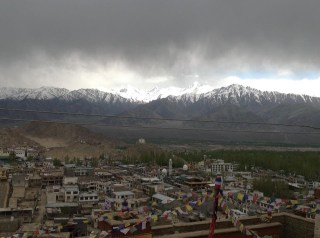 |
| View of Snow capped mountains from Leh Palace! |
It was an amazing journey of 130 kms due North of Leh to the Nubra Valley. A journey of steep narrow mountains roads, the highest Pass, snow-capped mountains, snow fall, and sand dunes in Nubra Valley and a sand storm, all in a day’s drive! We started out from Leh and soon began a steep climb. The road was narrow and with sharp curves. I was scared stiff, must admit I’m scared of heights and steep falls. I had to keep my eyes closed at first, while the car took sharp turns on the narrow road. So we climbed up to 15,500 ft. to the South Pallu check point. As we approached we found that we were among the snow-capped mountains and no longer clicking them from various strategic points. We got down from the car really excited to get photos close up of the snow and mountains. And then miraculously it began to snow. It was such a joy to see the first few drops of snow-flakes fall.
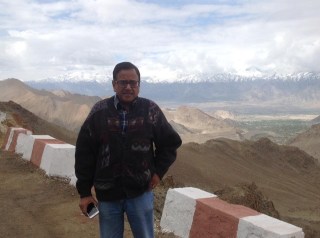 |
| Among the snow capped mountains, near South Pallu, 15,500 ft |
As we moved ahead the snow began to fall at a steady pace. It was a long time since I had experienced snow fall. The last I had seen snow fall was in 2013 and 2014 in the US. The speed of the car slowed down and the cars lined up as the army personnel were stopping gypsy jeeps like vehicles and helping to install iron chains on the wheel to prevent slipping and skidding. We had to stop again while a convoy of 24 army trucks passed, going downhill to Leh, perhaps to collect provisions for the army stationed on the mountain Passes.
 |
| Snow storm reduces visibility |
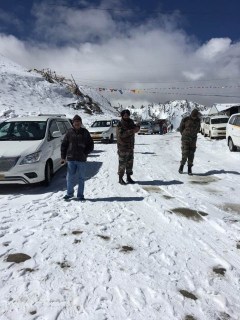 |
| Army faces stiff condition on the High Passes |
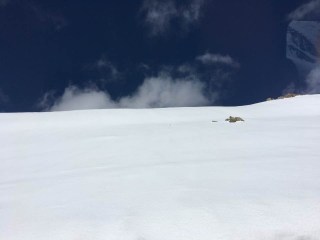 |
| White snow and clear blue sky above |
 |
| Khardungla Pass, 18380 ft |
We reached the top of the mountain range, the Khardungla Pass at 18,380 ft. We were Ok, and did not get any of the symptoms of breathlessness due the low oxygen levels in the air. It was one of the most exciting and high points of the day. The mountains around and the road was covered with fresh snow. With vehicles and people stomping around, much of the snow turned to ice. Vehicles and people were slipping and skidding over the ice. While I was busy enjoying the scenery and capturing it, I suddenly saw my partner, who came looking for me, slip and fall on his side, the left shoulder taking the entire impact. Strangely, as I watched the fall, his entire body was in a straight line horizontal to the ground, almost like the Heroes in fight scenes in the Hindi re-make of Tamil-Telegu movies! Weird fall, said he felt he had no control and nothing to hold on to. Fortunately, he was fine, except for some soreness the next day!
As we began to descend further the scenery changed. We saw some herds of Yak. The snow on the mountains had melted, they were bear and brown and rocky. The colours of the rocks were fascinating, from black to brown to red and even green! Then the mountains changed to ravines, on the side of the road were deep-steep rocky gorges, with streams flowing eventually to the river Shoyak. My partner said, “Look the Grand Canyon! Kya yeh bhi koi Grand Canyon se kam hai?” I said, “Oh yeah, but don’t think you escape from our trip to the Grand Canyon!” another tourist spot on our bucket list.
At some point of the descent we got a view of the Nubra Valley, at least one facet of it, a large river basin. Unlike the ravines earlier, there was greenery and cultivation around it and also the very large and grey muddy coloured River Shoyak.
 When it subsided we saw that the mountains around that we captured earlier on camera were almost invisible! The desert strangely had a river/stream flowing through it. I was fascinated by the flowing stream. The water was cold in the Cold Desert! It had been a most remarkable day from the snow-capped mountains, snow fall, the desert, sand dunes, camels and a sand storm!
When it subsided we saw that the mountains around that we captured earlier on camera were almost invisible! The desert strangely had a river/stream flowing through it. I was fascinated by the flowing stream. The water was cold in the Cold Desert! It had been a most remarkable day from the snow-capped mountains, snow fall, the desert, sand dunes, camels and a sand storm!

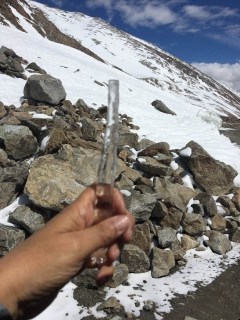
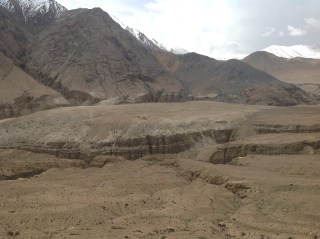

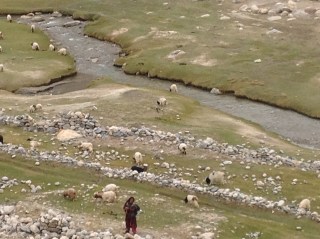

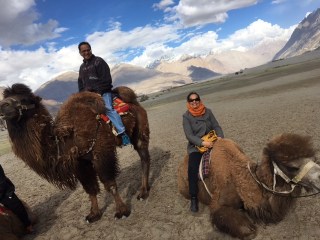
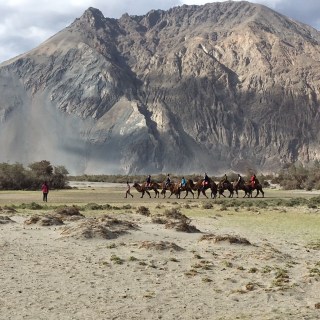
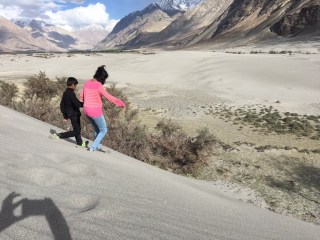
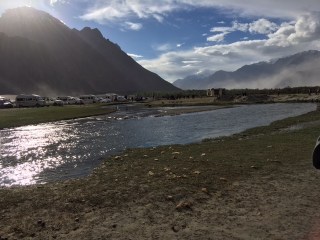
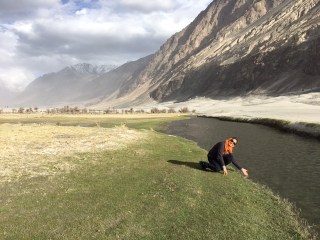
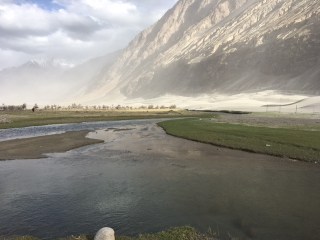
Beautiful! Your post made me relive the memories of my trip to Ladakh four years back. 🙂 And yeah, hunder desert is one of its kind. Loved that landscape.
LikeLike
Totally agree on you naming 'Ladhak – the Indian Grand Canyon' !!!It's indeed an amazing trip. In fact, the drive from Leh to Pangong lake via Changla pass was one of the best road trips of my life till date.
LikeLike